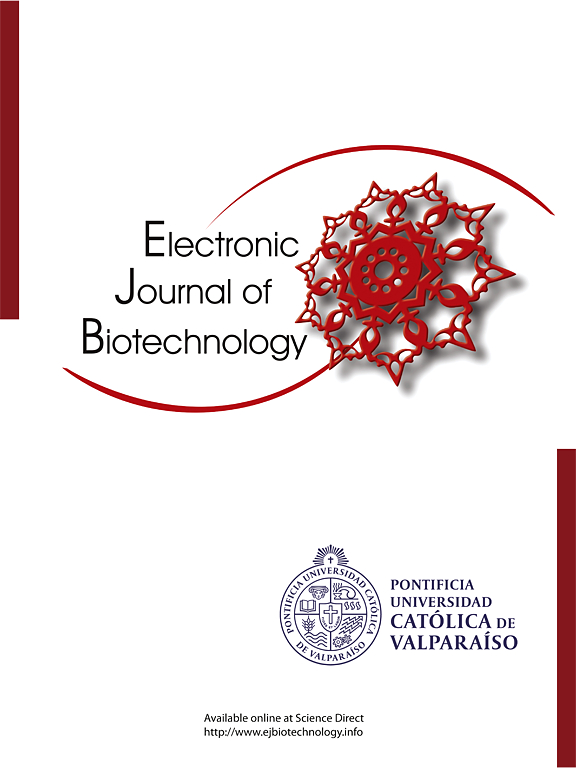微生物学方法:微生物群落的比较评价和增强的抗生素敏感性试验
IF 2.5
4区 生物学
Q3 BIOTECHNOLOGY & APPLIED MICROBIOLOGY
引用次数: 0
摘要
本研究提供了微生物群落谱和抗生素敏感性试验(AST)方法的比较分析。微生物群落分析方法,如Shotgun宏基因组学和16S rRNA测序,根据分辨率、通量、成本和可重复性等标准进行评估。Shotgun Metagenomics被发现提供了最高的分辨率和对微生物多样性的详细见解,尽管成本和复杂性更高。相比之下,16S rRNA测序提供了一种更具成本效益和高通量的替代方案,尽管分类分辨率较低,但适合大规模研究。培养组学虽然提供了独特的表型数据,但显示了可重复性的可变性,需要更多的劳动密集型过程。抗生素药敏试验(AST)将传统的药片扩散法和微汤稀释法与新兴的分子法和自动化药敏试验技术进行比较。传统方法以其在确定最低抑菌浓度(mic)方面的准确性而闻名,这对于指导有效的抗菌治疗至关重要。然而,新兴的方法提供了更快的周转时间和更高的吞吐量,这在临床环境中越来越重要,重点是抗菌药物管理。结论:本研究强调了根据具体研究或临床需要选择合适方法的重要性,平衡了成本、敏感性和产量等因素。建议将多种方法整合起来,以克服单个技术的局限性,从而更全面地了解微生物生态系统和耐药性概况。这些发现对于加强研究和临床实践至关重要,特别是在抗菌素耐药性构成全球挑战的背景下。如何引用:Yakobi SH, Nwodo UU。微生物学方法:微生物群落的比较评价和增强的抗生素敏感性试验。中国生物医学工程学报(英文版);2009;34。https://doi.org/10.1016/j.ejbt.2025.01.001。本文章由计算机程序翻译,如有差异,请以英文原文为准。

Microbiological methodologies: Comparative evaluation of microbial community and enhanced antibiotic susceptibility testing
Background
This study provides a comparative analysis of microbial community profiling and antibiotic susceptibility testing (AST) methodologies.
Microbial community profiling
Methods such as Shotgun Metagenomics and 16S rRNA sequencing were evaluated based on criteria including resolution, throughput, cost, and reproducibility. Shotgun Metagenomics was found to offer the highest resolution and detailed insights into microbial diversity, though at a higher cost and complexity. In contrast, 16S rRNA Sequencing provided a more cost-effective and high-throughput alternative, suitable for large-scale studies despite lower taxonomic resolution. Culturomics, while offering unique phenotypic data, showed variability in reproducibility and required more labor-intensive processes.
Antibiotic susceptibility testing (AST)
Traditional methods such as disk diffusion and broth microdilution were compared to emerging molecular and automated AST technologies. Traditional methods were noted for their precision in determining minimum inhibitory concentrations (MICs), crucial for guiding effective antimicrobial therapy. However, the emerging methods provided faster turnaround times and higher throughput, which are increasingly important in clinical settings focused on antimicrobial stewardship.
Conclusions
The study underscores the importance of selecting appropriate methodologies based on specific research or clinical needs, balancing factors such as cost, sensitivity, and throughput. The integration of multiple methodologies is recommended to overcome the limitations of individual techniques, providing a more comprehensive understanding of microbial ecosystems and resistance profiles. These findings are crucial for enhancing both research and clinical practices, particularly in the context of the global challenge posed by antimicrobial resistance.
How to cite: Yakobi SH, Nwodo UU. Microbiological methodologies: Comparative evaluation of microbial community and enhanced antibiotic susceptibility testing. Electron J Biotechnol 2025;74. https://doi.org/10.1016/j.ejbt.2025.01.001.
求助全文
通过发布文献求助,成功后即可免费获取论文全文。
去求助
来源期刊

Electronic Journal of Biotechnology
工程技术-生物工程与应用微生物
CiteScore
5.60
自引率
0.00%
发文量
50
审稿时长
2 months
期刊介绍:
Electronic Journal of Biotechnology is an international scientific electronic journal, which publishes papers from all areas related to Biotechnology. It covers from molecular biology and the chemistry of biological processes to aquatic and earth environmental aspects, computational applications, policy and ethical issues directly related to Biotechnology.
The journal provides an effective way to publish research and review articles and short communications, video material, animation sequences and 3D are also accepted to support and enhance articles. The articles will be examined by a scientific committee and anonymous evaluators and published every two months in HTML and PDF formats (January 15th , March 15th, May 15th, July 15th, September 15th, November 15th).
The following areas are covered in the Journal:
• Animal Biotechnology
• Biofilms
• Bioinformatics
• Biomedicine
• Biopolicies of International Cooperation
• Biosafety
• Biotechnology Industry
• Biotechnology of Human Disorders
• Chemical Engineering
• Environmental Biotechnology
• Food Biotechnology
• Marine Biotechnology
• Microbial Biotechnology
• Molecular Biology and Genetics
•Nanobiotechnology
• Omics
• Plant Biotechnology
• Process Biotechnology
• Process Chemistry and Technology
• Tissue Engineering
 求助内容:
求助内容: 应助结果提醒方式:
应助结果提醒方式:


